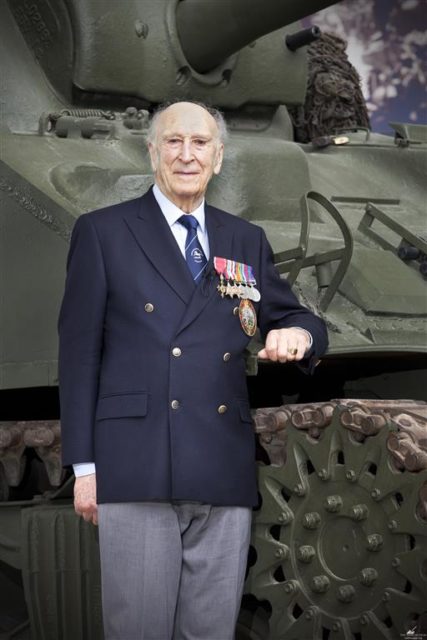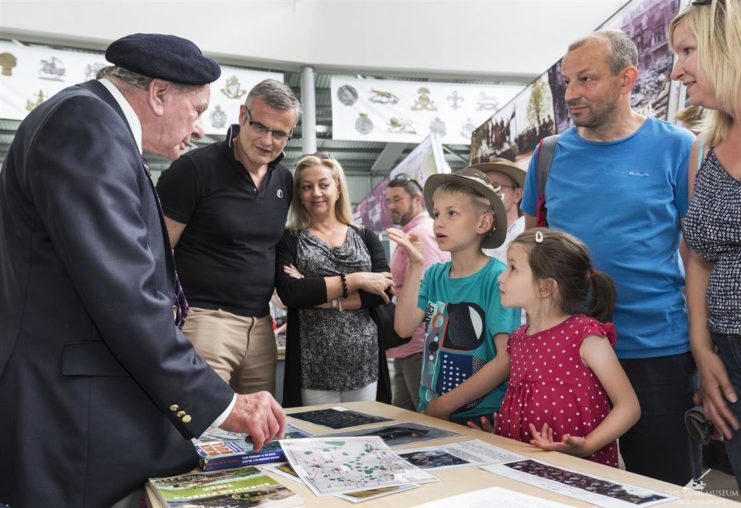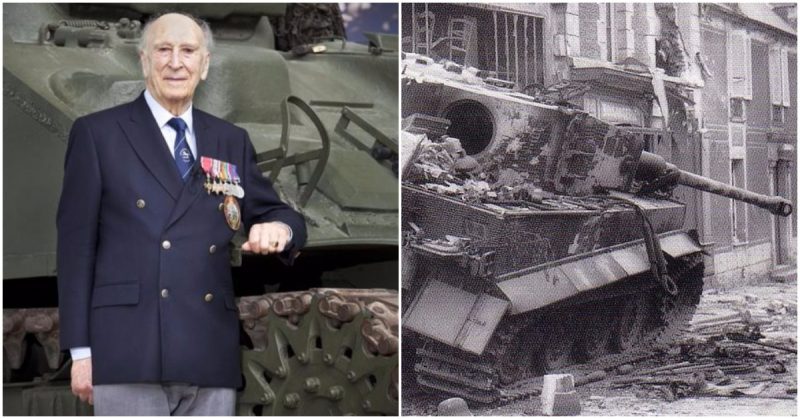The Tiger Collection features the memories of a number of veterans who fought in and against the Tiger. This short series takes a more detailed look at their experiences. In Part Three British veterans, Ernest Slarks and Ken Tout discussed training and early combat. This fourth post focuses on their experiences on the battlefield.
The Sherman
Their Shermans soon became home. Crews could often spend the entire day in their tank, “say from dawn 3-4 o’clock in the morning until 11 o’clock at night after sunset then you sat there and … you just endured…it wasn’t a comfortable experience at all.”
Tout was happier in a Sherman than the equivalent British tanks, as “we thought it was much more roomy…for somebody with long legs like me it was much easier in a Sherman than in a Valentine or a Crusader.” Slarks felt the same, but got used to it: “it’s something like your caravan holiday you know it’s a small area after living in a house and it’s the same thing if you live in a turret for weeks.”
Neither man slept in their tank. Slarks and his crew “had a bivouac which we put on the side of the tank and all slept under”whereas Tout’s crew “dug a trench and you ran the tank over the trench and you got into the trench and slept in some sort of feeling of safety.” This approach was risky, and could only be done “as long as you were on solid ground so that you didn’t have any fear of the tank sinking and closing up the trench that you were sleeping in which you were always afraid of.”

Slarks and Tout both had fond memories of their food: “because they were American tanks, we had American rations and they were very good in big boxes…But the food was very good really.” Tout remembered particularly “that there were lots of tins of cling peaches, yellow cling peaches from California which were beyond anything that I had ever eaten as a child, I’d never seen them before.
“Mainly it was processed already prepared meats like a soup or a mixture of meat and vegetables, pork and veg, meat and veg and so on and corned beef of course, corned beef was everywhere and instead of bread you had the kind of hard biscuit which you learned to live with, it was adequate… The only problem was that all your water was chlorinated so you never had a decent cup of tea.”
There were other challenges. Slarks and his crewmates “used to use the spent carriages to pee in you see and throw them out the port hole.” Looking back, he was sure they all suffered from sleep deprivation, “but it’s amazing how you cope with these things.”
British view of the Tiger
Both men knew of the Tiger. Tout remembered that “in a sense we were afraid of the Tiger because of its reputation and because we’d seen the devastation it could make,” but he also knew they were “very much in the minority. In fact many people who talked about Tigers may never have seen one because there were so few around… but having said that the Tiger really was the beast of the battlefield.”
Slarks felt the same: “we were always scared of the Tiger… but you rarely saw them.” As a Firefly crewman he felt that the Germans “were a bit afraid of the 17 pounder because it was the answer to the German 88mm.”
The War’s End

Ken Tout’s war ended after an accident in a Normandy village. His tank was parked on the side of the road “on the soft verge and the verge gave way, we toppled over…and as a result of that I got my leg rather nastily mangled…so I was sent back to England.” Once he recovered his “last year in the Army was spent on the terrorist activities in Palestine with a regiment of armoured cars.”
Ernest Slarks went on leave to the UK after the Battle of the Bulge in early 1945. On his return “everybody was to have a medical. We had to be A1 to be in a tank crew, nothing less and I came out as B1.” After a period guarding an internment camp for suspected Nazis, he was demobbed in April 1947. He wasn’t disappointed not to be sent back to the tanks, as “I was never a military man…it wasn’t my thing really…And I was eager to get married and get out you know.”
A message from The Tank Museum:
“Please Support Us: As a charity, we rely on public support for all our activities. Our work is funded entirely by people like you. With your support, we can continue to create content. With the right support we might be able to do it more regularly – and can be even more ambitious. Please Click on the Banner Below.”
Thanks to the Tank Museum for this Blog, which originally appeared here.

